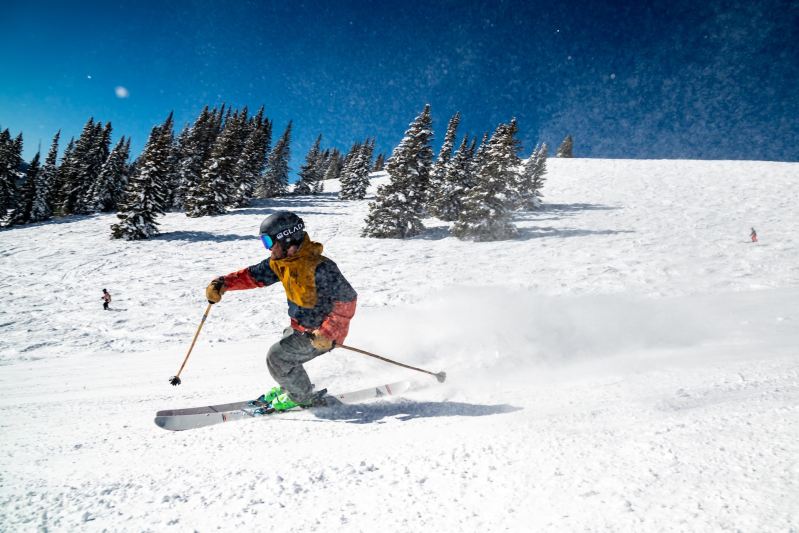So you’ve decided to learn how to ski. Welcome to the party, pal! Prepping for your first day on the slopes can seem daunting. Unlike simpler outdoor pursuits like hiking or biking that require minimal gear, skiing is an entirely different animal. It’s more like scuba diving in that it involves more preparation and equipment, and you could argue, a greater sense of adventure, especially if you’re gunning to ultimately take on backcountry skiing. Skiing for beginners involves figuring out what clothes to pack, which gear to buy, and how to transport it all to the mountain.
And all of that is before you even get to the mountain. Then there’s the matter of actually learning how to ski. Should you book a proper lesson or go it alone and hope for the best? There’s no right answer, really. Here, we tackle these questions and more with the best pro tips for beginner skiers (and a few for intermediate and expert skiers too).
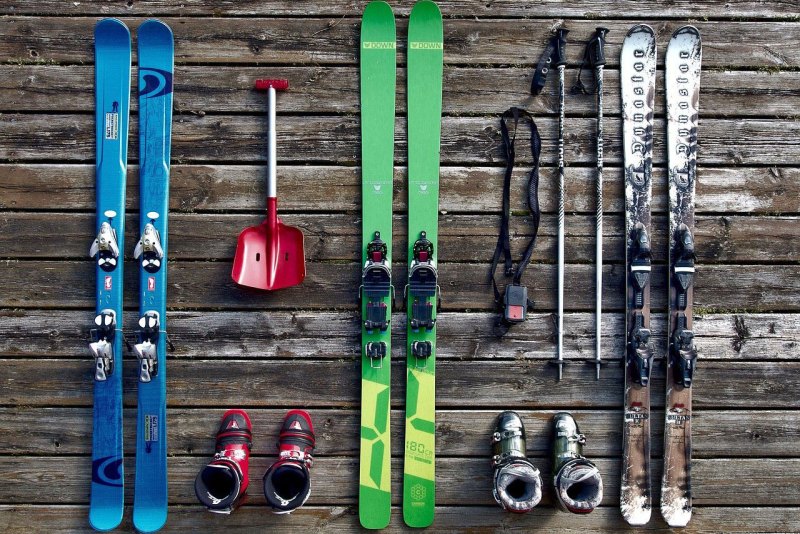
Prepping for the slopes
Gear up
Getting the right gear before your premier ski run is critical. That doesn’t mean you need to spend a fortune on the best brand-name ski equipment. But, if your skis, boots, bindings, or some combination of all three aren’t properly fitted, you’re likely to be miserable, and none of the rest of the tips on this list will matter.
It’s tempting to buy everything you’ll need online since it’s often cheaper and more convenient. But, getting fitted in person by a professional is essential, especially for first-time skiers. At a minimum, you’ll want:
- Skis
- Ski boots
- Bindings
- Ski poles
- Ski goggles
- Ski helmet (optional, but a little extra protection is never a bad idea)
- Ski backpack (optional, but great for carrying extra layers, a hydration pack, sunscreen, and other essentials)
Don’t stress too much over packing every last thing. Most ski resorts rent just about every kind of gear imaginable. If you forget something, chances are you can pay a small fee at the mountain for a loaner.
Dress the part
What you wear skiing is just as important as your ski equipment. If you’re cold, damp, and uncomfortable, you won’t want to return to the slopes any time soon. The two most important tips when planning your ski apparel are: Never wear cotton and always dress in layers.
The saying amongst avid outdoorsmen is that “cotton kills.” It’s only a mediocre insulator. It’s heavy compared to lighter alternatives like merino wool and modern synthetics. But, the worst part is that it loses all of its insulating capabilities when wet from snow, rain, or sweat. Bottom line: Leave the cotton — including cotton jeans, hats, socks, gloves, base layers, everything — at home.
Second, dress in proper layers. Start with a fitted base layer made from a quick-wicking material that draws sweat away from your skin. Add an insulating layer or two made of midweight merino wool or something similar. Add an additional heavier layer if you’re sensitive to the cold. Together, these layers will help maintain your body heat throughout the day. Finish with a warm, windproof, waterproof (or, at least, water-resistant) outer shell. Finally, toss an extra insulating layer in your backpack too. If you’re heading higher up the mountain, the weather can be significantly colder and windier, so it pays to pack more than you think you’ll need. Don’t forget to pack a dry change of clothes for the ride home too.
Know your limits
No one travels to K2 for their first mountain climbing expedition. Likewise, you can’t learn to ski on a mountain that caters only to intermediates and experts. Research the resorts in your area to be sure they cater to beginners. Most offer at least some well-groomed bunny (green) slopes and amenities to help novices ease their way into the sport. But it pays to be sure before you arrive.
Buy your lift passes online
Most resorts sell ski passes online, often at a deep discount. This saves you time waiting in line when you arrive (that means more time on the slopes) and can help you save money to boot. Sometimes, the earlier in the season you buy, the more you save. If possible, consider shopping for your ski passes months before the season starts.
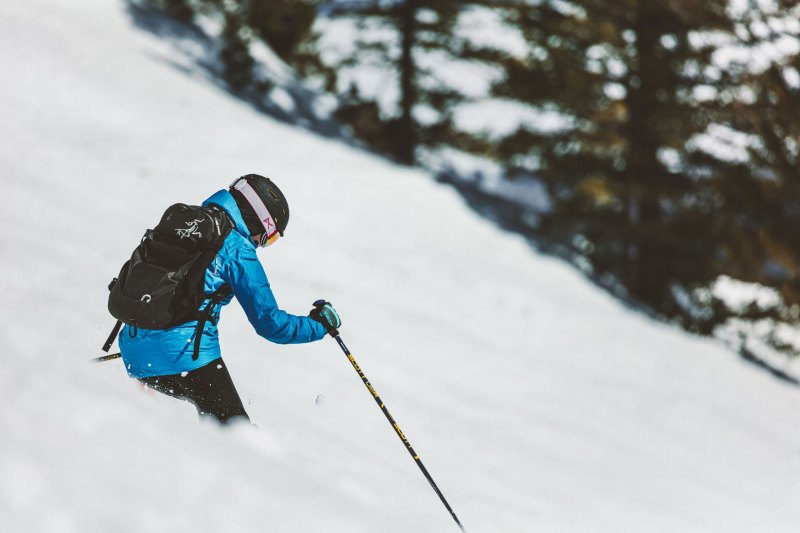
Crushing your first ski run
Protect yourself (and your phone)
Spending hours in a cold, dry, blinding white environment can wreak havoc on your body, your skin, and your gear. Be sure your ski goggles are tinted and protect against UV light. To protect any exposed skin, apply a liberal dose of sunscreen before hitting the slopes. Always pack a bottle of water or a hydration pack to keep up your fluids throughout the day. Even an “easy” day on the slopes will dehydrate you faster than you think. Lastly, cold weather kills batteries. Stash your phone in an inside jacket pocket, so it stays warm and protected in the event of a wipeout.
Catching the ski lift
For many first-time skiers, getting on and off the chairlift seems almost as intimidating as skiing itself. The lift is constantly moving, there’s a crowd of people watching you, and the attendant is ushering you forward. It pays to slow down. Take as much time as you need. If you’re nervous, let the attendant know that it’s your first time. They can slow the lift down or stop it entirely so that you can board safely at your own pace.
Consider a professional ski lesson
Many adults have a hard time throwing themselves into learning a new skill or sport. It can be hard knowing that you’re bound to make an arse of yourself in front of total strangers. Don’t be too proud to admit what you don’t know. Consider booking a ski lesson with a professional at the resort. A quick, hour-long one-on-one is often cheaper than you’d expect. Plus, you’ll almost certainly learn more in that hour than you can accidentally discover on your own in a week on the hill.
Whatever you do, though, don’t take a “lesson” from your significant other. If you’ve spent any time in a tandem kayak (a.k.a. a “divorce boat”) with a boyfriend, girlfriend, or spouse, it’s easy to imagine how wrong this situation can go. Seriously, learning to ski can frustrate even the most laid-back among us. If you’re pouring all your energy into keeping your composure in front of your teacher, you’ll lose focus on actually learning to ski.
Take it slow and easy
That day pass you bought entitles you to — wait for it — an entire day on the slopes. There’s no need to rush, so take your first day slow and easy. Stay patient with yourself. You’ll fall. You might crash into things or other skiers. At some point, you might even lose skis, poles, and gloves in an epic “yard sale” wipeout. Just know that you’ll laugh about it later, and you’ll give your fellow skiers something to Instagram too. Don’t let it bruise your ego. Embrace the learning experience. Know that the less-skilled skiers among you are too focused on not falling, and the more skilled have probably seen far worse. Brush yourself off, make a mental note of what you can do differently on your next run, and move on.
Practice pizza, French fries (and repeat)
Whether you’re braving it alone or working with a professional, “pizza” and “french fries” are the two basic ski positions to learn. Pizza involves bringing your ski tips together to wedge into the snow to slow you down. Stopping completely requires touching your tips together to dig your ski edges into the snow. That’s why every newbie skier should master “pizza’ing” before anything else.
“French fries” involves keeping your skis as tight and parallel as possible for maximum speed and better downhill control. Master these two stances, and you can proudly call yourself a skier.
Keep your balance
Skiing forces you into an awkward, unnatural position. Beginners who aren’t used to this often try to adjust to a more comfortable stance. Some adopt a “back seat skiing” stance by leaning too far back, while others angle forward to counterbalance themselves. While these positions may seem more comfortable, they’re less than ideal for skiing. Bend your knees and focus on squaring your legs with your torso for a strong, confident stance that gives you maximum control. Plus, a more balanced stance means not working as hard and skiing more efficiently.
Learn to turn
First-time and beginner skiers tend to focus on their ankles to turn. While this might seem intuitive, it quickly becomes tiring and can lead to injuries. Focus on looking where you want to go, then use your whole body, including your core, hips, knees, and ankles, to lean and guide you there. Always look where you want to go, never down at your ski tips.
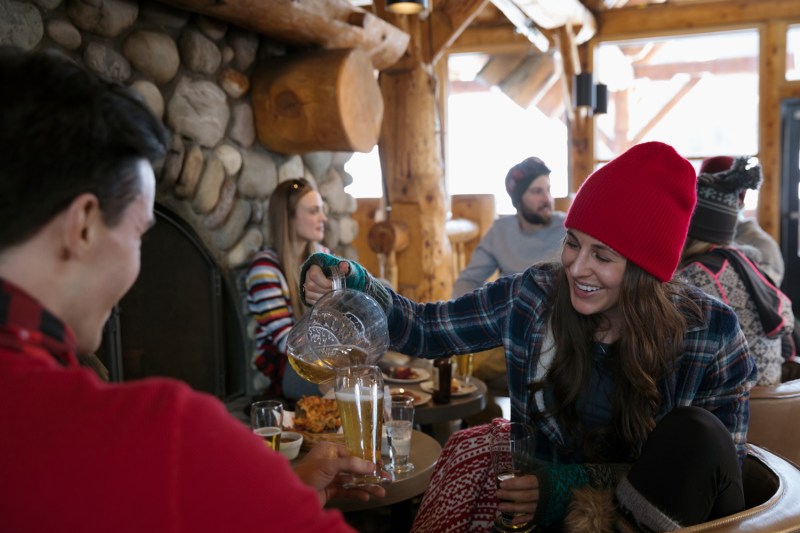
Enjoy the après ski
Know when to fold ’em
It’s easy to get caught up in having too much fun on your first day on the mountain. As with almost every outdoor pursuit, most injuries happen near the end of the day when we’re a little tired or trying to squeeze in just one last run. Consider wrapping up before you start feeling too worn out.
Rehydrate and replenish
In addition to drinking water throughout the day, rehydrate with a tall glass back at the lodge. Drink more than you think you need to, and consider supplementing with electrolytes. Once you’ve wound down after your first day on the slopes, it’s time to head out for a proper après ski celebration.
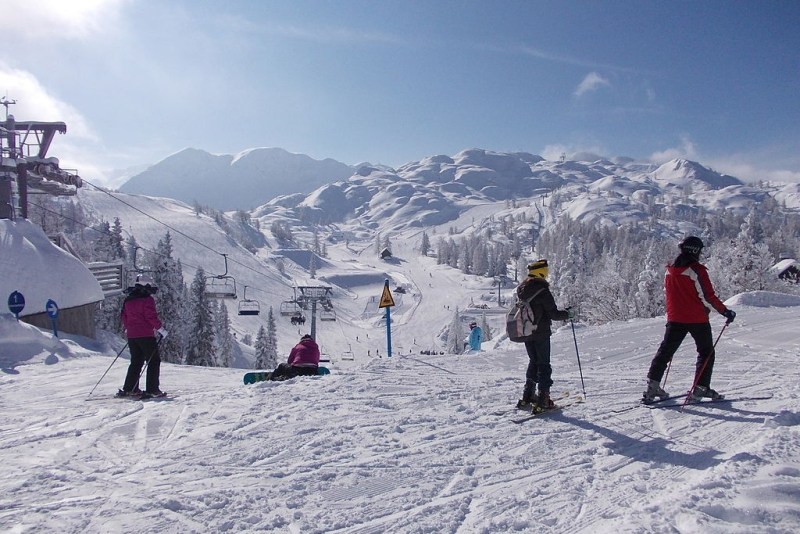
Skiing for beginners: Common mistakes to avoid when learning how to ski
Now that you’ve read up on the essential things to know above, here’s a short list of common mistakes to avoid when you’re learning how to ski. Some may have been quickly covered already, but this list may help you keep these things top of mind. Don’t do these things.
- Leaning back. This will make you lose your balance and fall.
- Not leaning far enough. You need to lean forward to make your skis turn.
- Moving your hips. Keep your hips centered and your weight evenly distributed between your skis.
- Not twisting your body. When you turn, twist your body in the direction you want to go.
- Looking at the front of your skis. Keep your eyes focused on where you want to go, not on your skis.
- Having your skis too far apart. Keep your skis shoulder-width apart for stability.
- Not going fast enough. It’s easier to control your skis when you’re going at a moderate speed.
To wrangle all your ski equipment, transport it to the mountain, and keep your vehicle neat and tidy along the way, check out our roundup of the best roof racks for skis and snowboards.
